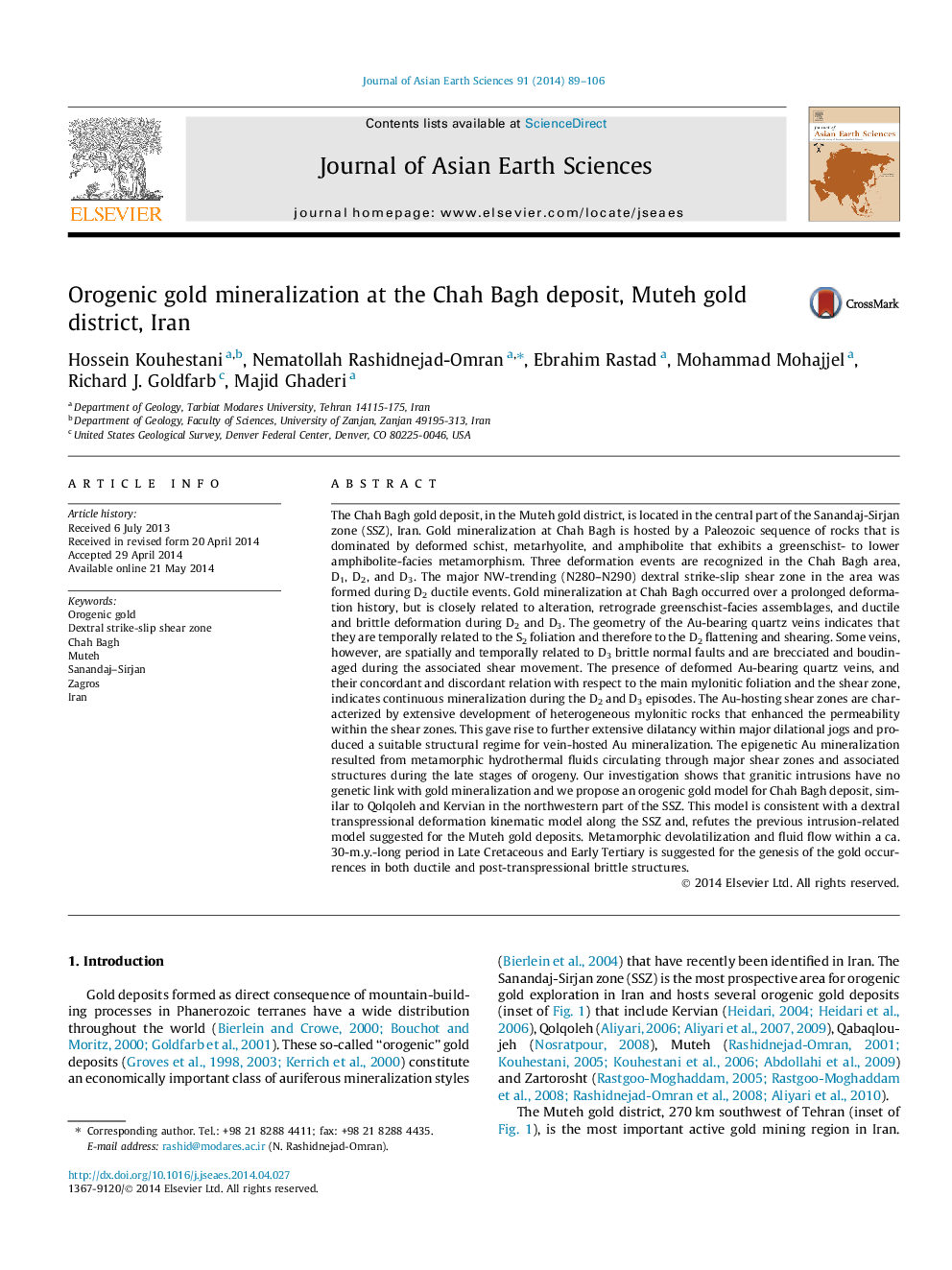| کد مقاله | کد نشریه | سال انتشار | مقاله انگلیسی | نسخه تمام متن |
|---|---|---|---|---|
| 4730551 | 1640377 | 2014 | 18 صفحه PDF | دانلود رایگان |
• Synsedimentary to diagenetic sources of Au within primary volcano-pyroclastic rocks.
• Au precipitation from metamorphic hydrothermal fluids during late stages of orogeny.
• No genetic link between granitic intrusions and Au mineralization.
• An orogenic model rather than intrusion-related model for Au mineralization at Muteh.
• Genesis of the Au occurrences in ductile and post-transpressional brittle structures.
The Chah Bagh gold deposit, in the Muteh gold district, is located in the central part of the Sanandaj-Sirjan zone (SSZ), Iran. Gold mineralization at Chah Bagh is hosted by a Paleozoic sequence of rocks that is dominated by deformed schist, metarhyolite, and amphibolite that exhibits a greenschist- to lower amphibolite-facies metamorphism. Three deformation events are recognized in the Chah Bagh area, D1, D2, and D3. The major NW-trending (N280–N290) dextral strike-slip shear zone in the area was formed during D2 ductile events. Gold mineralization at Chah Bagh occurred over a prolonged deformation history, but is closely related to alteration, retrograde greenschist-facies assemblages, and ductile and brittle deformation during D2 and D3. The geometry of the Au-bearing quartz veins indicates that they are temporally related to the S2 foliation and therefore to the D2 flattening and shearing. Some veins, however, are spatially and temporally related to D3 brittle normal faults and are brecciated and boudinaged during the associated shear movement. The presence of deformed Au-bearing quartz veins, and their concordant and discordant relation with respect to the main mylonitic foliation and the shear zone, indicates continuous mineralization during the D2 and D3 episodes. The Au-hosting shear zones are characterized by extensive development of heterogeneous mylonitic rocks that enhanced the permeability within the shear zones. This gave rise to further extensive dilatancy within major dilational jogs and produced a suitable structural regime for vein-hosted Au mineralization. The epigenetic Au mineralization resulted from metamorphic hydrothermal fluids circulating through major shear zones and associated structures during the late stages of orogeny. Our investigation shows that granitic intrusions have no genetic link with gold mineralization and we propose an orogenic gold model for Chah Bagh deposit, similar to Qolqoleh and Kervian in the northwestern part of the SSZ. This model is consistent with a dextral transpressional deformation kinematic model along the SSZ and, refutes the previous intrusion-related model suggested for the Muteh gold deposits. Metamorphic devolatilization and fluid flow within a ca. 30-m.y.-long period in Late Cretaceous and Early Tertiary is suggested for the genesis of the gold occurrences in both ductile and post-transpressional brittle structures.
Journal: Journal of Asian Earth Sciences - Volume 91, September 2014, Pages 89–106
